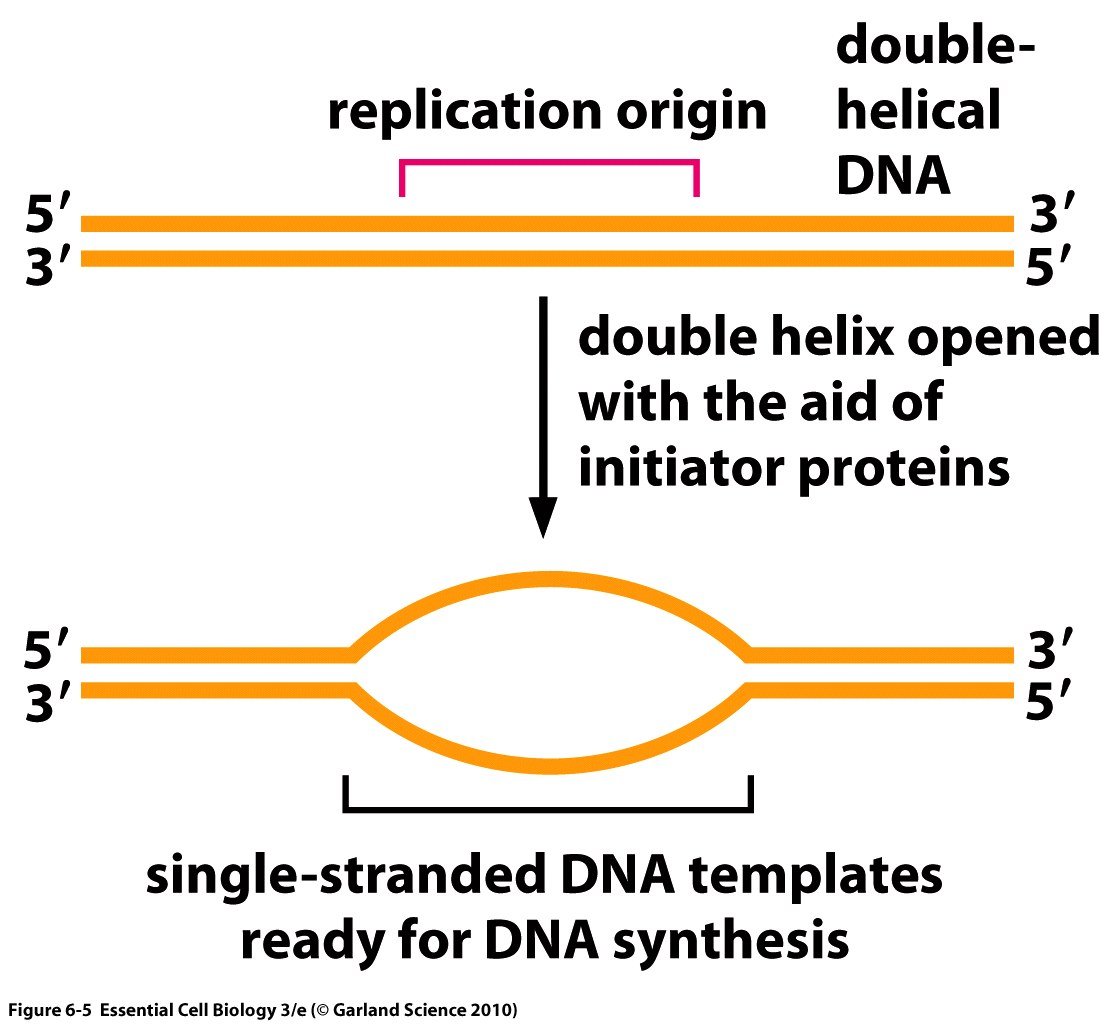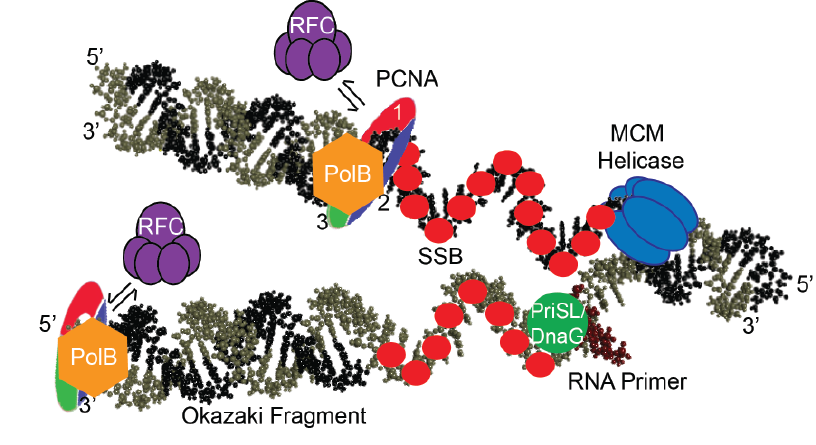Preface
In Part 1 of this series of blog posts I covered some of the basics of DNA and introduced some general concepts that I will go into more deeply in other posts. Part 1 is available for reading here:
@justtryme90/science-lesson-dna-part-1
Today's post will cover the topic of DNA replication. This will be a long and somewhat technical post more similar to text book level material, I will try to keep things as brief as possible ( I will only focus on replication of the leading strand), while still being able to serve as an accurate general reference tool for this biological process.
Introduction
The DNA replication process revolves around the separation and subsequent copying of two anti-parallel parental template strands. This process is performed through the delicate interplay of a variety of different enzymes and accessory proteins to effectively synthesize DNA in a 5’-3’ direction from each template strand with opposite polarity. DNA replication begins in all organisms at a site called an origin. It is here that a complex of proteins called ORC (or Origin Recognition Complex) binds and melts double stranded DNA into a bubble (Figure 1):
Figure 1

Source: http://oregonstate.edu/instruction/bi314/fall12/figure_06_05.jp g
At either end of the bubble where the two single strands come together back into double stranded DNA is known as the replication fork. Efficient DNA replication relies on both precise and uninterrupted DNA synthesis at the replication fork. As such, DNA replication polymerases in conjunction with a variety of accessory factors coordinate accurate synthesis in a discontinuous fashion on both the leading and lagging strands resulting in the creation of a semiconservative DNA product containing one parental template strand and one newly synthesized complementary strand (Figure 2).
Figure 2

Source: Self
DNA Helicase (The Unwinder of DNA)
A DNA helicase (Figure 2, MCM Helicase) is the enzyme responsible for pushing the replication fork forward, and opening up more single stranded DNA. It is a motor protein and utilizes ATP as a power source to move forward. Helicases are found in all organisms ranging from the simplest viruses to the most complex (us). In humans the helicases name is MCM or Mini Chromosomal Maintanence protein (many of the names of proteins have nothing to do with their actual function and are derived from what they were first discovered doing.) Behind the DNA helicase is where DNA replication actually is occuring, it all begins with a...
Primase (Synthesizer of First Primer)
In Humans the primase exists as a fusion with a DNA polymerase and is called the Pol Alpha Primase. The primase (Figure 2 PriSL/DnaG) is an enzyme which denovo (denovo means fresh, and is used because a primase is the only enzyme which can place down nucleic acid bases with out connecting them to a prior base, as I discussed in part 1 for how DNA is assembled) synthesizes a short RNA fragment on top of one of the single strands of DNA separated by the helicase. After an RNA primer has been laid down the replication complex is formed.
The Replication Complex (Extender of DNA Do-er of all the work)
The replication complex is comprised of three proteins, a DNA polymerase (Figure 2, PolB), a circular Clamp (Figure 2 PCNA), and an enzyme which loads the circular clamp onto the DNA, as the clamp is a closed circle and needs to be opened up and placed on (Figure 2, RFC).
The DNA polymerase is the enzyme that is responsible for elongating the newly RNA primed DNA strand. These enzymes require that primer and the free base at the 3'end (remember I talked about directionality and the functional groups of the base necessary for the chemistry of linking the bases together in part 1), in order to incorporate new deoxyribonucleotides (DNA bases). These enzymes are extending DNA in the 5' -> 3' direction (linking a new base at the 3' End of the previous base). However prior to the polymerase binding, the remainder of the replication complex must first be assembled.
At the end of the RNA primer the Clamp Loader binds and brings along with it the circular Clamp. The reason this clamp protein is important is because it acts as a scaffold for the DNA polymerase which after clamp loading binds to the clamp and the DNA forming the full replication complex. DNA polymerases are interesting in that they can not stay bound to DNA for long periods of time on their own. They bind, quickly incorporate a few nucleotides and fall off. However their interactions with clamps are strong, this keeps the polymerase sitting on the DNA for extended periods of time and allows them to incorporate many nucleotides prior to falling off ( >10,000) It is this interaction that enables replication to occur in a rapid enough fashion such that the entire genome is replicated prior to a cell dividing. With out the clamp and clamp loader, the polymerase would spend much of its time free in solution searching for the primed DNA to extend, making the process very slow.
Summing Things Up
DNA replication is a process which involves the interplay of a variety of protein machines responsible for separating, and generating a new DNA strand which is complementary to the original upon which they are using as a template. This process must occur quickly, and with an extremely high degree of accuracy so as to allow for efficient propagation of an organisms genome. To achieve this, life has evolved a variety of accessory proteins in addition to those actually performing the chemistry directly to ensure their appropriate placement on DNA. These proteins in total are known as the replication complex. The description I provided above details the process which occurs in a continuous fashion on the "leading strand" of DNA. As DNA is directional, and the enzymes involved in this process are also directional, the opposite strand must also be replicated. This opposite strand is called the lagging strand, and is done so in a discontinuous fashion which also requires more proteins and additional complexity. I will not discuss lagging strand replication at this juncture (you're welcome!).
Upcoming Topics
What Happens when DNA Mutations Arise and How are They Fixed?
Genes and How Proteins are Expressed
Genetic Modifications (eg. How are GMO Foods Made?)
Other Topics of Interest Suggested By YOU
